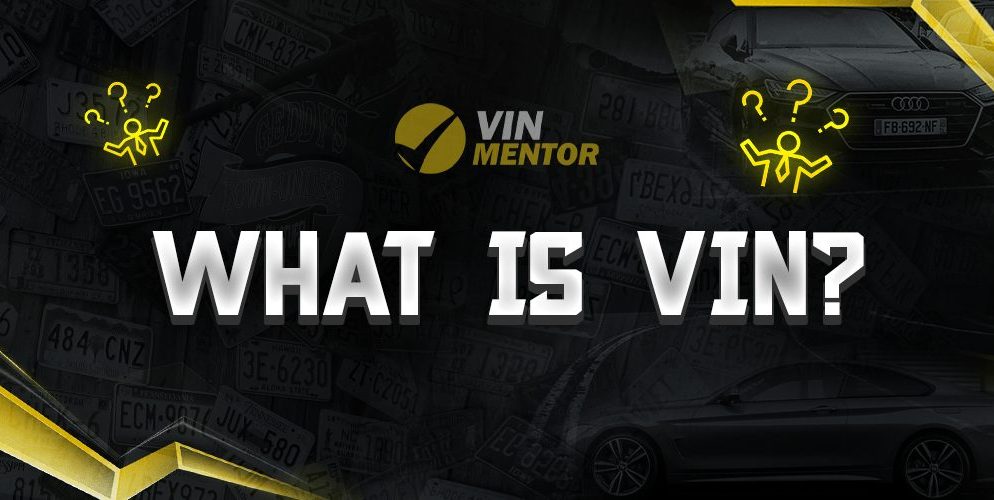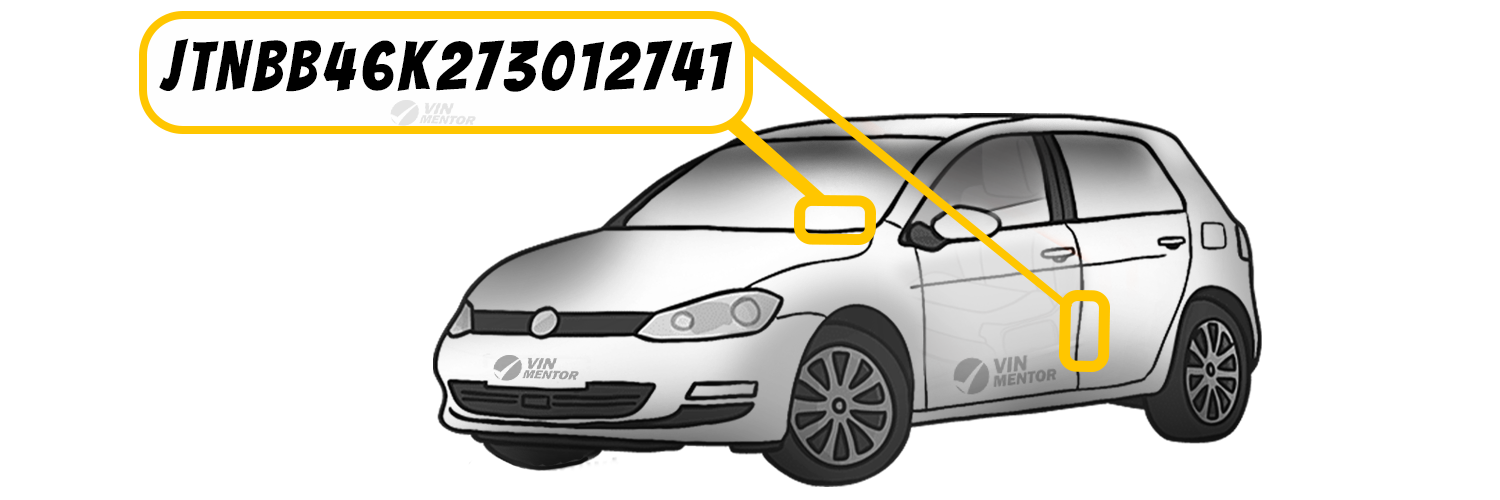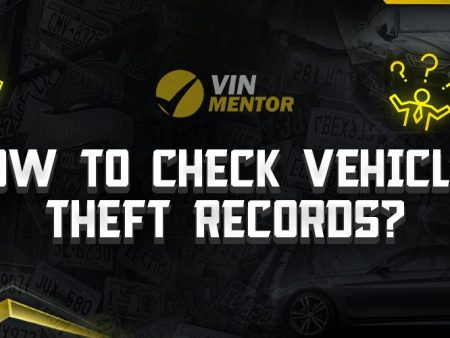

Vehicle buying and selling have been a top business for decades. A basic understanding of VIN can save you from any potential wrong-happening.
A miscalculated purchase not only deprives you of your hard-earned cash but can also put you in legal trouble. To safeguard you from all these odds, we’ve prepared this short guide covering every aspect of VIN.
The VIN on your vehicle’s dashboard might look like a string of random numbers, but it contains a wealth of information that can help you make good decisions about purchasing a vehicle.
VINs are more than a set of arbitrary numbers. They are unique identifiers given to every car that provide clues about its history.
Without further ado, let’s dive into every crucial detail of VIN.
Key Takeaways
- VIN stands for “Vehicle Identification Number”
- When cars are manufactured, they are assigned a VIN number
- VINs follow global standards, and no two vehicles have the same VIN
- VINs are also known as chassis numbers
- The VIN is a 17-character series of letters and numbers without spaces
- VINs do not use letters that can be mistaken for numbers, such as I, O, Q, U, and Z
- Every location has a different VIN. It indicates the country or region where the vehicle was manufactured
What is VIN?
The term “VIN,” which stands for “Vehicle Identification Number,” refers to a unique collection of numbers and characters assigned to each automobile at the time of construction. It consists of a single line of 17 characters without any spaces, except for any digits that can be mistaken for numerals, such as I, O, Q, and Z.
The Purpose of a VIN
A VIN is a unique identifier for a vehicle, which can be used for tracking actions like registrations, warranty claims, and recalls. You can use the VIN to learn about the car’s history when purchasing a used vehicle.
VINs are important tools for countering auto-related scams because they can give you essential information about the vehicle’s history, like insurance claims and thefts. Understanding the VIN is crucial for buyers and sellers, and knowing the basics of VINs helps you choose the best vehicle for you and your family.
Who Uses VINs
Every organization dealing with vehicles uses VINs to track and obtain information about them.
| Who Uses VINs | How VINs Are Used |
|---|---|
| Auto manufacturers | To track vehicles during manufacturing and when specific models have to be recalled |
| Government agencies | To provide a unique number for registration |
| Law enforcement agencies | To identify vehicles that have been stolen or used in crimes |
| Insurance companies | To quickly identify vehicle types, which is helpful when giving insurance quotes |
| Mechanics | To identify the engine type and other parts of the vehicle |
| Car dealerships | To track inventory, market to online shoppers, and send out recall notices |
| Used car purchasers | To obtain information about a vehicle to make purchasing decisions |
VINs are also used to identify cars in vehicle history reports, which are offered by various companies to report on things like the status of a vehicle title and the number of previous owners.
How Do You Find the VIN on a Car?
The most common place for the VIN is the driver’s side dashboard. However, you can find VINs in several locations on a car.
- On the Dashboard. By looking through your car’s windshield, you can see the VIN on the dashboard on the driver’s side. It is usually located near the bottom of the windshield on a metal plate.
- Inside the Driver’s Side Doorjamb. When you open the driver’s side door, you can find the VIN on the inner wall of the doorjamb. It’s usually a sticker, and it may also contain other information in addition to the VIN barcode.
- Under the Hood. VINs are displayed In the engine compartment in various locations, such as on top of the radiator or the front of the engine block.
- Driver’s Side Quarter Panel. On older vehicles, VIN plates are sometimes located on the driver’s side quarter panel.
You can find VINs in various locations, depending on the make and model and when they were manufactured. Recently, some auto dealerships have started engraving the VIN on each window and the windshield to deter theft.
What Do The Numbers on a VIN Mean?
Not only does the VIN tell you what country a vehicle was manufactured in, but it also contains other information, like the year, make, and model of the vehicle.
Like your fingerprint, a car’s VIN provides a wealth of information. The production number, vehicle manufacturer, body type, and engine size can all be decoded from the VIN.
The VIN reveals the following information:
- The first three characters of the VIN tell you where the vehicle was manufactured and its type and manufacturing division.
- The following six characters contain information about the car’s model, body, and mechanical systems.
- The last eight characters are used to identify the car’s year and the plant where it was manufactured, including its place in the assembly line.
You can use a VIN decoder to get specific information about a vehicle.
VIN Mismatches
VIN mismatches are more common than people think. They are usually the result of a transcription error made during the registration process. Your local DMV might need additional papers to resolve a VIN mismatch if it is wrong by more than one number.
A thorough examination of the VIN on the documentation and the vehicle’s body is recommended. If the VIN on the title and the automobile are entirely different, it indicates fraud.
The Importance of VINs
According to CNBC used car scam statistics, a new consumer complaint is filed every 90 minutes. As online car sales continue to rise, more and more car buyers are at risk of scams and fraud.
There are several used car scams, including fake websites, photo scams, and fraudulent mobile apps. With a VIN report, prospective buyers can get trustworthy information about the vehicles they are interested in and save themselves thousands of dollars by avoiding these scams.
The VIN is the best tool for countering car scams because it can give you important information about the vehicle’s history, including safety recalls, insurance claims, and thefts. Understanding the VIN is crucial for buyers and sellers, and knowing the basics of VINs helps you choose the best vehicle for you and your family.
History of Vehicle Identification
Vehicle identification numbers have been used in the United States since 1954. At first, every manufacturer used their own format to create VINs.
In 1981, the National Highway Traffic Safety Administration (NHTSA) began using a standardized VIN format to create a global methodology for tracking and identifying vehicles. VINs have evolved and become more sophisticated over the past few decades.
TLDR
Conclusion
The importance of VINs in countering theft and scams is unparalleled. There are hundreds of online platforms to reveal information about any vehicle just with the aid of VIN. But, most of these options fail to provide accurate reports due to faulty databases or unreliable sources.
VINs are essential tools for tracking vehicles, and hundreds of online platforms use VINs to reveal critical information about a vehicle.
We’ve tested and reviewed the top VIN decoders that provide the most accurate information. Based on the precision of their results and the quality of their services, we recommend these VIN partners for all your vehicle identification needs.
FAQ
Is the VIN & Chassis Number the same?
Strictly speaking, the chassis number is actually the same as the vehicle identification number. VIN is engraved on vehicles’ chassis; that’s why people commonly use these terms interchangeably.
What is the Difference Between Engine Number and VIN?
The engine is the heart of any vehicle. These are usually given special numbers highlighting the power output and other specifications. Though VIN’s 8th digit deals with the engine, that doesn’t completely elaborate it.
In addition, engine numbers can be changed if the engine blows up. In contrast, the chassis number or VIN remains the same throughout the lifespan of the concerned vehicle.
In simple words, an engine number is the identification number of the engine block.













